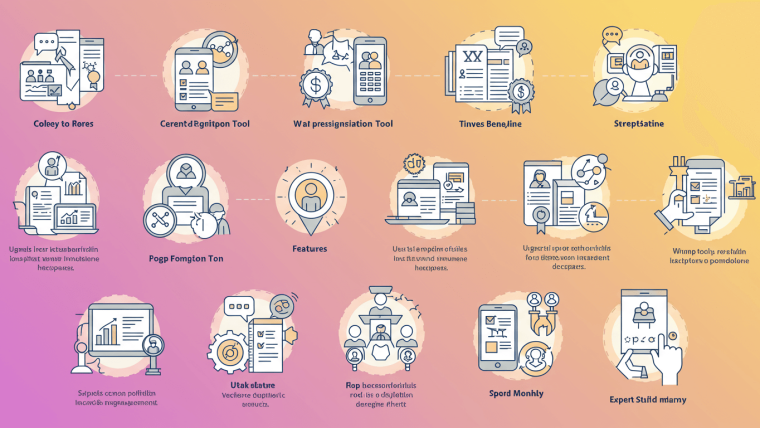Public speaking, as such, is an aspect of human development. While the practice itself has changed drastically over the past centuries, given technology and entertainment media emerged with time, conferences tend to still be conservatively performed in face-to-face meetings.
For companies and communities wanting to break down geographical boundaries, these online events offer a great opportunity for growth, network building, and scaling up.
When most people imagine hosting a conference, visions of vast auditoria and dramatic plenary sessions spring to mind. Thus, planners must consider how to best serve their attendees with the limited physical space they all have. In order to overcome these constraints, it is possible that a large number of individuals might be required.
Virtual conferences allow you to reach audiences worldwide and conveniently deliver content. They can save on logistics costs as well.
Why Host a Virtual Conference?

A few reasons to host a virtual conference include:
-
Savings on travel and venue rentals for speaker/trainer/entertainer shall be given first consideration.
-
Several other lectures will be given with different experts presenting their views on the same topic.
-
Multiple viewpoints will lead to a more nuanced understanding of complex issues and problems.
-
There is likely to be healthy competition.
-
Wider reach: Connect with participants from around the world and broaden your event’s sphere of influence.
-
Lower costs: Save on venue rentals, travel and accommodation for both speakers and audience members.
-
Recorded content: Offer members access to recorded sessions post-conference, thus extending the value of the conference.
-
Eco-friendly: With the help of this document, you can reduce your conference’s total Carbon Dioxide emission.
Host a Virtual Conference: Tips to Success
Step 1: Establish Your Goals
Start by asking yourself, “What do I want this conference to accomplish?” Are you addressing an audience, generating leads, networking, or displaying expertise? Clarifying your objectives assures your content, speakers and marketing strategy all map to your intended outputs. Learn more about Webinars as a Lead Generation Tool.
Step 2: Select the Right Platform
The right platform (or the wrong one) can make or break your virtual conference. Choose a platform that suits your needs, whether it is delivering keynotes, hosting Q&A sessions, networking, or supplying breakout rooms.
Some popular platforms include: Zoom Webinars, Hopin, and Microsoft Teams.
Step 3: Define Your Schedule
An agenda should be concise and conversational, and it must hold your audience’s attention. By combining keynote speeches with panel discussions, audience Q&A, and workshops, you can bring diversity and maintain interest. Include short breaks and networking opportunities.
Pro Tip: Use social media polls to let your audience choose topics they are interested in.
Step 4: Get Engaging Speakers

Speakers at your event make up its backbone. This can be industry leaders, influential people or experts likely to attract the virtual audience. An engaging speaker is not only didactic—they are also captivating, even when there is an invisible barrier between them and the audience.
Key factors:
-
Hear diverse voices
-
Ensure comfort with virtual tools
-
Conduct technical trials beforehand
Step 5: Promoting Your Conference
Use a strong digital marketing strategy:
-
Email marketing: Short and valuable emails to encourage sign-ups
-
Social media outreach: Tease content via LinkedIn, Twitter, & Instagram
-
Speaker and partner marketing
-
SEO optimization: Create a keyword-rich landing page highlighting the event’s key features
Step 6: Start Rewards Earlier
Early registration could receive special incentives or access to resources such as premium speaker sessions or downloadable materials at a discount.
Step 7: Test Your Technology
Do a full run-through of your platform before the event. Test audio, video, screen-sharing, polls, and other elements. Train your team to troubleshoot in real time.
Step 8: Reaching Your Participants
Engage participants through polls, follow-up Q&As, discussions, and lounge events. Encourage interaction, call for volunteers, and ask questions during sessions.
Tips Too: Use gamification—offer prizes like iPads to top participants. After the event, compile a “Big Article of 20 Most Popular Sessions” with stats.
Step 9: Collect and Respond to Feedback
Distribute a post-event questionnaire to gather input on best sessions, weakest parts, and ideas for next time.
Step 10: Build a Community
Encourage attendees to join a private group, forum, or mailing list to continue the conversation and prep for future events.
Step 11: Calculate Your Return on Investment
Measure success indicators like lead conversions. If using a CRM, track leads from registration and chat rooms for future outreach.
Going Virtual with Confidence
Hosting a virtual conference opens the door to new audiences, sustainable growth and exciting opportunities. Follow these steps and use the right tools to make your event stand out in the digital space.
Get ready—with our help—to take your virtual conference to the next level. If even a small mistake is made, it could be magnified. Whether it’s planning, hyping up, or hosting big stakeholders—just contact us now. Let’s make something unforgettable!








Webinar Analytics: A Complete Guide to Measuring Success and Improving Performance
The Ultimate Webinar Follow-Up Strategy to Turn Attendees into Customers
Webinar Accessibility Best Practices: How to Make Your Online Events Inclusive for All
Webinar Personalization: Tailoring Content to Audience Segments for Maximum Engagement